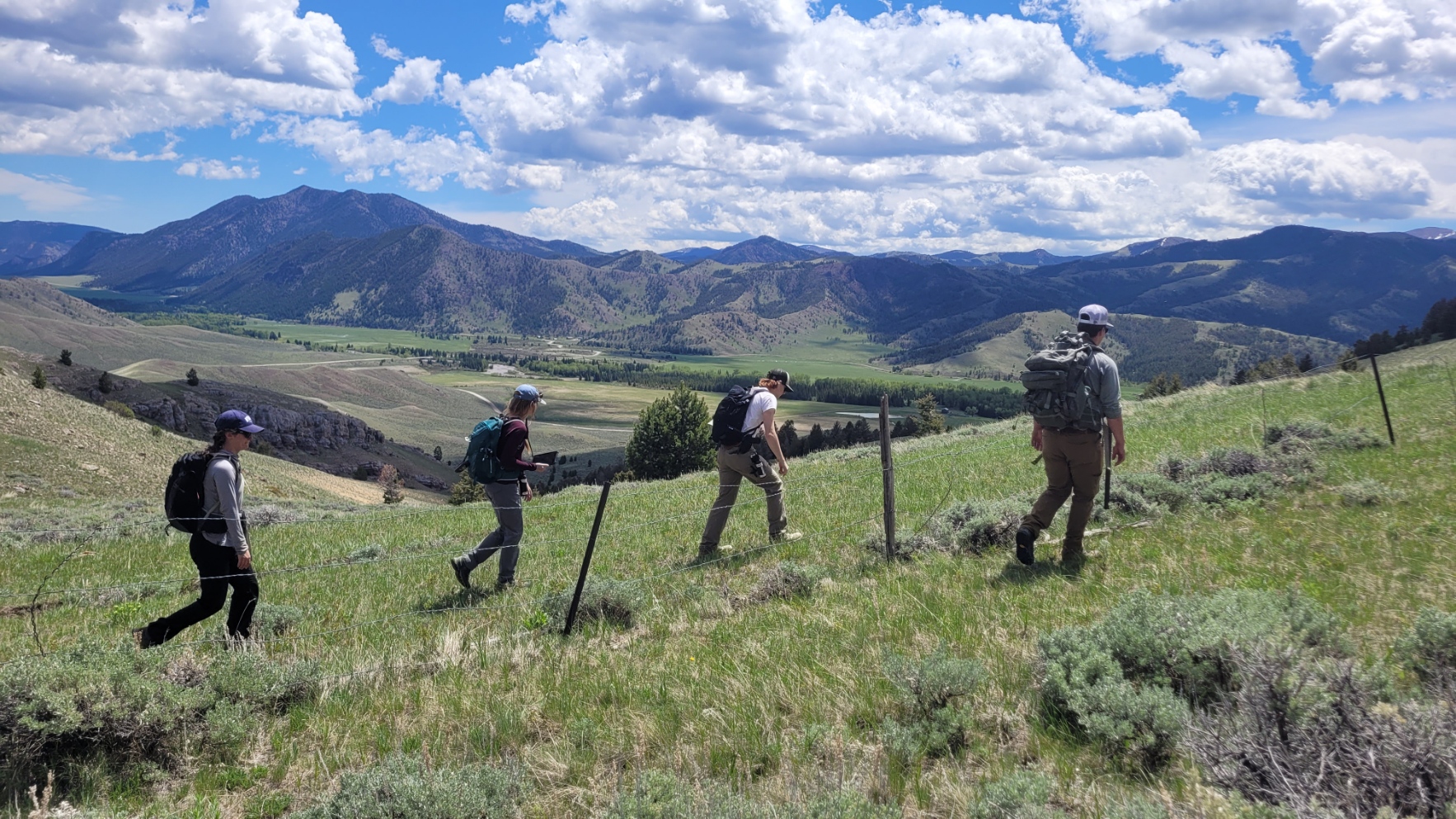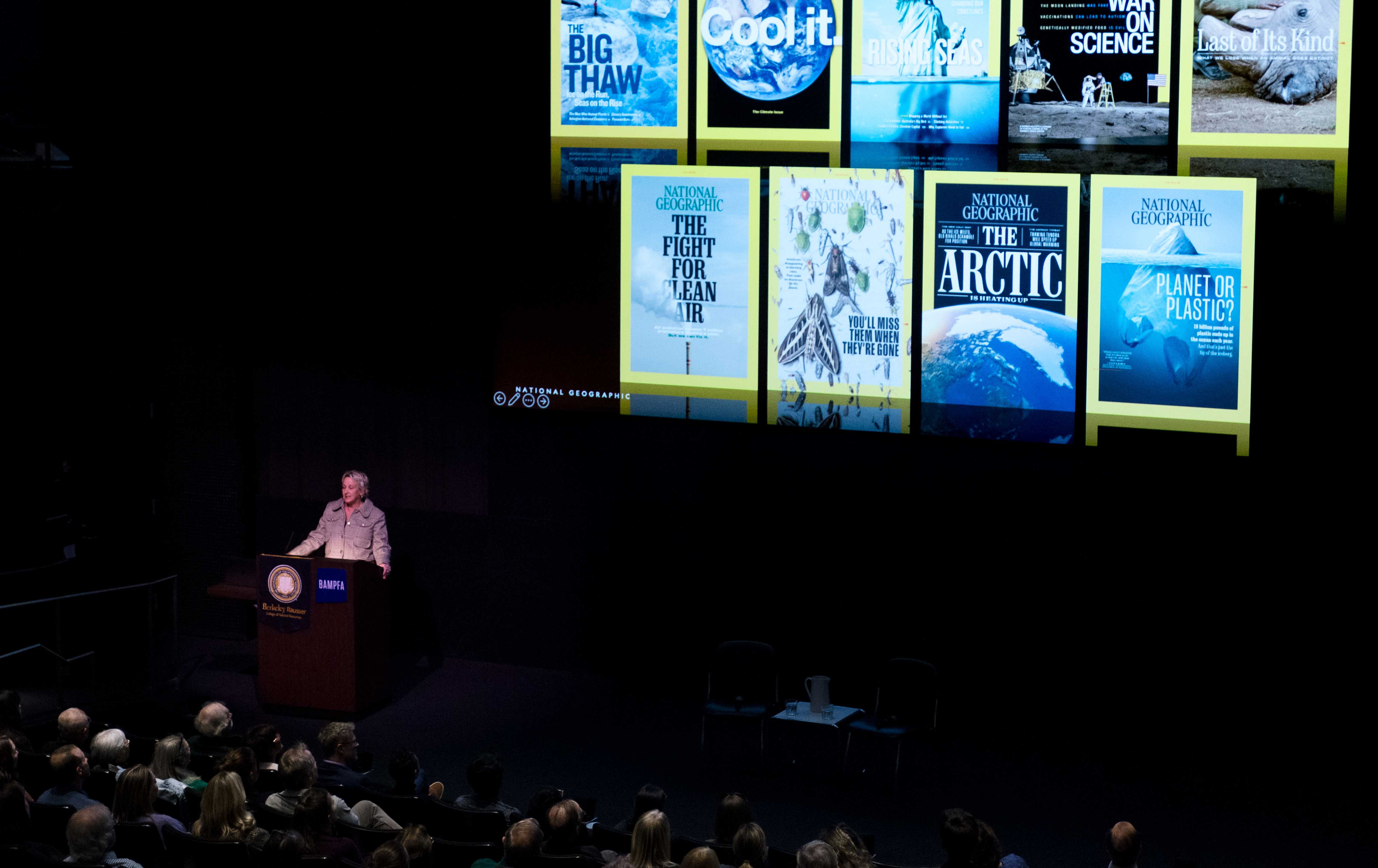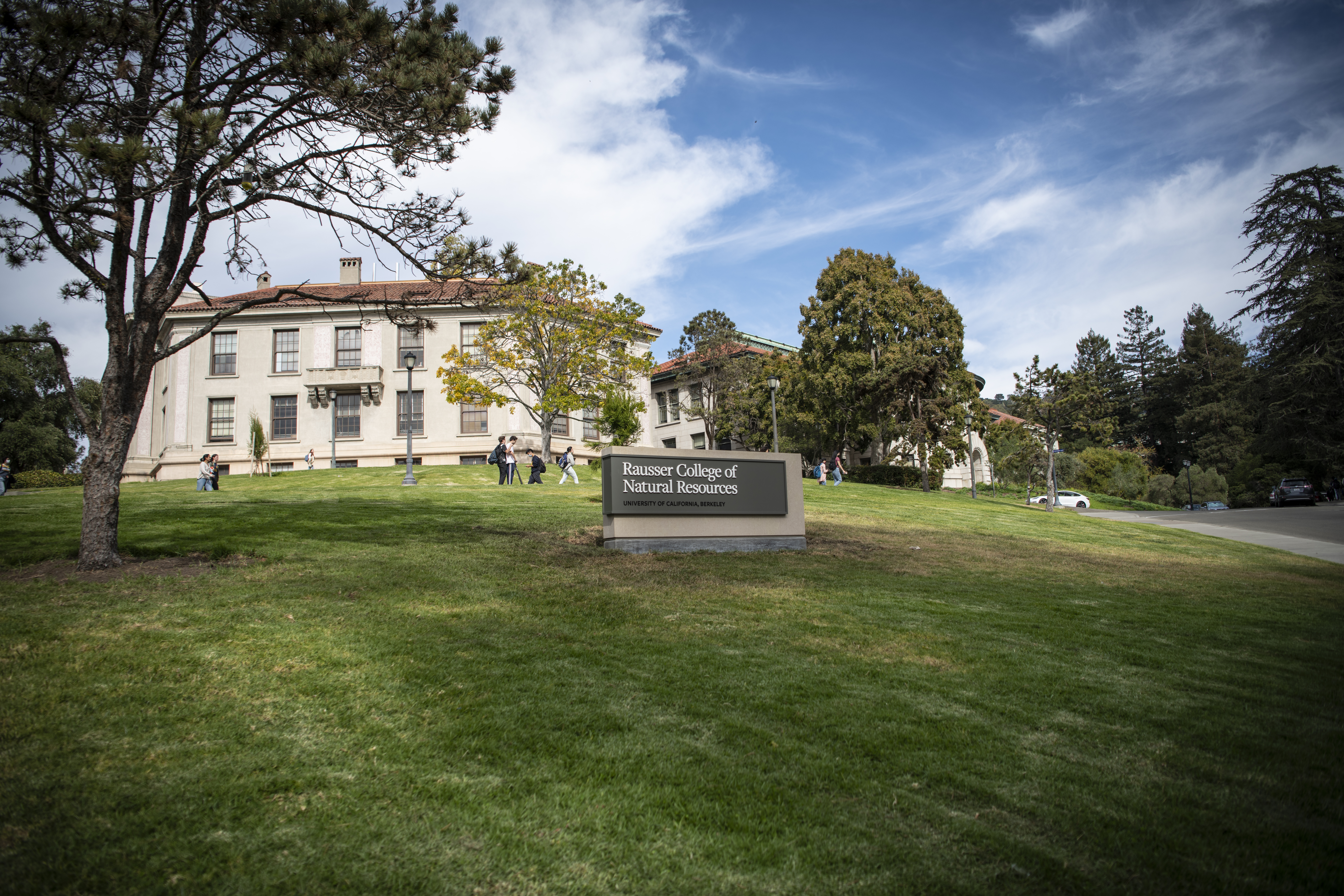Stone Center Annual Report 2024-25

[image caption]
Introduction
The mission of the Stone Center for Environmental Stewardship at UC Berkeley is to create positive, long-lasting outcomes for people and the planet by collaboratively solving environmental challenges. We advance our mission through three interrelated program areas:
- Living Labs: We connect place-based, innovative academic research with local expertise to solve real world problems on private, Tribal, and public lands and waters.
- Convenings & Collaborations: We catalyze unique collaborations and workshops to help solve our most pressing conservation challenges.
- Trainings: We teach, train, and learn from students, faculty, and colleagues at UC Berkeley and beyond to cultivate current and future generations of conservation leaders.
During its second year, the Stone Center for Environmental Stewardship at UC Berkeley has continued to establish a foundation for on-going successful operations and growth. Simultaneously, we have been advancing work to achieve measurable results in the Beyond Yellowstone Living Lab, strengthening existing collaborations, launching new partnerships, and securing additional funding. In this report, we will share what we have accomplished over the past year in each of these programmatic areas and highlight upcoming work and new projects.

[image caption]
Living Labs
Beyond Yellowstone Living Lab
Our first living lab – the Beyond Yellowstone Living Lab (BYLL) – is a hub for conservation research and action in the Greater Yellowstone Ecosystem (GYE), blending applied science with policy expertise and community engagement to positively impact people and wildlife. The BYLL partners are collaboratively conducting and supporting projects related to wildlife, working lands, and socio-ecological dynamics.
Over this past year, we have advanced a number of projects, including:
- Improving understanding of wildlife movement and barriers. The GYE harbors some of the most diverse and abundant wide-ranging large mammals in the U.S. As they move, local wildlife pass through not just national parks, wilderness areas, and multiple-use public lands, but also vast areas of private, working lands where many owners and managers are interested in partnering to advance land and wildlife conservation. Through BYLL, we have been improving our understanding of wildlife movements and how barriers interfere with and change animal behavior.
- Absaroka Front Fence Inventory. Obstacles to wildlife movements include obvious infrastructure like roads, but also less well understood barriers like fences. Both the location and type of fence (e.g., number of strands, height, materials) can influence wildlife movements, but neither are well mapped. We launched a project to map and inventory fences on public lands in the Absaroka Front, including developing a new mobile mapping tool. In 2024, the BYLL mapped and inventoried 470 miles of fences over a census area of c. 500 square miles, and mapped the location of over 1,000 fence features (e.g., braces, gates). Read more in a report here.
- Remotely Mapping Fences. Alongside Berkeley Alum Dr. Wenjing Xu, we are founding members of the Open Fence Project, an international collaboration developing an AI algorithm to map fences from satellite data. The model has achieved 80% recall across the test state of Montana, and we are now expanding it to include 11 western states in the US. Long-term, this project aims to provide a freely-available interactive online atlas of fences across the world.
- Virtual Fencing. Interest is rapidly growing in this fairly recent technology, which allows livestock to be managed remotely using GPS-enabled collars instead of physical fencing. We developed a workshop to introduce virtual fencing technology to livestock managers in the GYE, and co-hosted it with the Property and Environment Research Center. Outcomes from this workshop included the launch of a quarter-million dollar fund to support adoption of virtual fence technology on private lands in key wildlife corridors, and the production of a policy brief.
- Mule deer video collaring project. In collaboration with Wyoming Game and Fish, we are using video collars on mule deer to gain new insights into one of the GYE’s longest migrations. We deployed 10 collars in 2023 and secured a funding match from The Nature Conservancy to deploy 20 more collars in 2024. We are currently conducting data analyses on collars as they are retrieved.
- Comparative modeling of archaeology and wildlife migration. We are working with Dr. Larry Todd and colleagues to combine archaeological and ecological data to learn more about the historic residents of the Absaroka Front. Dr. Todd is using relationships between ancient human use sites and current ungulate migration paths to discover where migrations have remained the same for thousands of years and where they may have been lost or changed over time. Preliminary models have been completed with promising results, and will be shared at the 2025 Society of Archaeologists national conference.
2. Capacity building. We are improving capacity in the BYLL team in a number of ways.
- Postdoctoral Fellow: Working Lands. Dr. Kristin Davis is working with the Schmidt Center for Data Science and Environment and the Stone Center for Environmental Stewardship to use big data/technology to inform equitable conservation approaches on working landscapes in the GYE.
- Data analyst/social scientist. We collaborated with the University of Wyoming to hire a researcher to support several BYLL projects. Over the next year, this position will analyze landowner surveys, evaluate impacts of land development on wildlife, and assess how virtual fencing may affect landscape connectivity.
- Early career development. We employed four early career professionals in the Absaroka fence mapping project, training them in field data collection and GIS.
3. Outreach and communications.
- Scientific Publications: Together with partners, we published key papers including, Developing new tools to de-risk wildlife occupancy on private lands, and Challenging conventional views on the elevational limits of pronghorn habitat.
- Conferences and workshops. We were invited to serve as panel experts and presenters at four scientific conference sessions and one public forum.
- Press: Professor Arthur Middleton authored an OpEd in the NY Times titled, “Yellowstone is disappearing. The TV show may be partly to blame” and was interviewed along with a local rancher on KODI Radio.
- Other media: We partnered with Park County Open Lands and CactusPro Productions to produce a short film sharing the story of our first locally led conservation easement titled, A Legacy on the Land.
In the coming year, we will convene partners across the Greater Yellowstone Ecosystem to celebrate successes and develop strategies for the next phase of work, while continuing to advance work to understand barriers to animal movements.
Northern California Living Lab
Over the past year, we have been laying the groundwork for the Northern California Living Lab. In Northern California, we envision a deeply interdisciplinary research collaboration that brings together experts in fish ecology, forestry, Indigenous stewardship, wildlife ecology, human-wildlife conflict, hydrology, river restoration, and more. A recent paper co-authored by Professor Stephanie Carlson underscores the importance of these types of interdisciplinary approaches to protecting keystone species. While not an output of the Stone Center, this paper nonetheless informs our future work by highlighting a core component of our approach: providing scientific research to address needs identified by our partners. In this case, the Berkeley team provided scientific support to a NOAA restoration effort and the results of the work are informing the next phase of restoration.

[image caption]
Convenings & Collaborations
American Keystones
We are excited to be collaborating with the National Geographic Society (the Society) to launch the American Keystones initiative. American Keystones are species with outsized ecological, cultural and/or economic value, like buffalo, oak trees, salmon, and beavers. They are species that have sustained societies, driven conflict and colonization, and sparked unity through contemporary conservation and restoration efforts. In this project, UC Berkeley and the Society are joining forces to combine science, education, and storytelling to spark a national conversation about species that shaped our past, and the people, partnerships, hope and vision that is shaping our future.
In the fall of 2024, the Stone Center hosted its first convening, bringing together experts in scientific research, Indigenous stewardship, communications, conservation, natural resource management, and education to provide input into an early draft of the Keystones concept. In March 2025, the project will launch with the release of an RFP to identify an initial pool of American Keystones Explorers, which we anticipate convening in the fall.
Institute for People, Parks and Biodiversity
Berkeley’s Institute for People, Parks and Biodiversity (“Parks Institute”) was established about ten years ago to continue Berkeley’s legacy of engagement in the creation and management of national parks. The recent departure of the Park Institute’s Executive Director created an opening to discuss alignment with the Stone Center. The Stone Center and Parks Institute have much in common. They both work with a similar group of faculty, and link research to real-world problems to improve outcomes for people and the environment. Both also consider the role of parks and protected areas, but in different ways. For the Institute, parks are the primary focus; for the Center, parks are one of many tools for large-scale conservation. Together with Jon Jarvis, Board Chair at the Parks Institute and former Director of the National Park Service, we are actively seeking opportunities to add capacity to the Stone Center so that we can continue the legacy of the Parks Institute under the Stone Center umbrella.
Urban Biodiversity
We are collaborating with Berkeley Assistant Professor Chris Schell and the California Natural Resources Agency (CNRA) to host a workshop in the spring. The goal is to provide the CNRA with advice about how urban biodiversity can contribute to the state’s 30x30 goals.
Mapping Conservation Outcomes
Through our Beyond Yellowstone Living Lab, we are collaborating with Associate Professor Carl Boettiger on a NASA-funded project to map conservation outcomes across the U.S. The tools that Carl and his students are developing will inform strategic conservation planning in the Greater Yellowstone Ecosystem and also support the American Keystones project.
The California Wolf Project
The Stone Center is building relationships with faculty and researchers on the California Wolf Project with the goal of supporting the translation of research findings into action. We envision that future work will involve convening key stakeholders, and we are actively seeking funding to support these efforts.
The Future of Conservation
In early 2025, former Under Secretary for Natural Resources at the USDA, Robert Bonnie, spent a week on campus discussing the future of conservation with a variety of faculty, graduate students, and postdoctoral fellows. We are currently working with Mr. Bonnie to plan both convenings and primary research over the coming years.
Corridors, Connectivity & Crossing Conference
In early 2025, several of us attended Pew Charitable Trust’s Corridors, Connectivity and Crossings Conference. In addition to a talk by Arthur, the Stone Center hosted a mixer, which we used to introduce the center to a key group of wildlife biologists, Indigenous stewards, land managers, and environmental NGOs.

[image caption]
Trainings
At the start of 2025, we began to develop and implement projects that will educate the campus community and beyond about what environmental stewardship is. We have many initiatives planned for this coming year.
Speakers
One of the ways that the Stone Center creates opportunities for learning is by inviting speakers to campus. In the fall of 2024, the CEO of the National Geographic Society, Dr Jill Tiefenthaler, gave a lecture titled, “Meeting the Moment: Embracing Change at the National Geographic Society.” Over 100 students signed up to attend this lecture, and many shared that they learned a lot from Jill’s talk.
This spring, we will host Meghan Hertel, Deputy Secretary for Biodiversity and Habitat at the California Natural Resources Agency to speak about the state’s 30x30 efforts. Finally, we are planning to co-host the fall Wildlife seminar series with Assistant Professor Alejandra Echeverri.
Graduate Student Grants
In March, we will launch the Stone Center for Environmental Stewardship graduate student fellowship competition. This year, we will aim to support three to four students at Berkeley whose research advances environmental stewardship through community-engaged research. Preference will be given to applicants whose work aligns with two of our existing projects: American Keystones and the Northern California Living Lab. Students whose research focuses on American Keystones will have opportunities to engage with the National Geographic Society through the American Keystones project, which will provide additional learning and media exposure opportunities for the students.
Journalism School Partnership
We are developing a collaborative course for the fall semester that will bring together graduate students in journalism and conservation science. Students will work together to identify stories for future development, and may have opportunities to engage with the National Geographic Society through the American Keystones project.
The Future of Conservation Education
We are in the process of establishing collaborations and partnerships with the National Geographic Society and Berkeley’s Lawrence Hall of Science to develop new educational materials based on the American Keystones concept and our Living Labs. These materials could include case studies for university courses as well as informal and formal K-12 educational materials.
Visiting Scholars and Sabbaticals
We are exploring mechanisms for the Stone Center to host visiting scholars and faculty on sabbatical from other institutions. This will expand the Center’s capacity and network, while also providing additional collaborative opportunities for students, postdocs and faculty.
4. Supporting Services
While not technically a program area, we are excited to share our successes in staffing, fundraising, communications, and advisory support.
Staffing
Over the past year, we have filled several critical positions at the Stone Center.
- Executive Director: In August 2024, Dr. Madhavi Colton joined as the Center’s inaugural Executive Director. Madhavi brings decades of experience in the environmental nonprofit sector, including in leadership roles at large and small nonprofits. Additionally, she has built and led collaborative research projects aimed at addressing real-world challenges, and has translated the results into conservation actions in multiple countries. Madhavi holds a Ph.D. in marine ecology from the University of Melbourne, Australia.
- Communications Manager: In October 2024, Suzanne Spencer joined both the Stone Center and Schmidt Center for Data Science and Environment as Communications Manager. Suzanne has over 10 years of communications experience in the nonprofit, philanthropic, and private sectors. Most recently, we worked at Full Court Press Communications where she led efforts with Tribal leaders, scientists, funders, and advocates to persuade federal officials to conserve public lands throughout the western U.S. Suzanne holds a Master’s of Public Administration from the University of Washington.
Fundraising
We are incredibly grateful for the support provided by our funders, including:
- James M. and Cathleen D. Stone Foundation
- BAND Foundation
- Knobloch Foundation
- William and Flora Hewlett Foundation
- Storer Foundation
- Ishiyama Foundation*
- Rocky Mountain Elk Foundation*
- Wyldlife Fund*
*Funds managed by the Buffalo Bill Center of the West.
Communications
We have refreshed our mission, vision, and values statements to more clearly communicate why the Stone Center was established and what we hope to accomplish. We have also consolidated what we do into three programmatic areas, which is helping us more succinctly and effectively share our work. Finally, we launched an initial Stone Center website in the fall, which we are currently updating with the new messaging.
Advisory Group
Building on the success of our initial advisory group, we have developed a new structure that includes clear roles and responsibilities for a long-term advisory group. Over the coming year, we will implement this plan with the addition of new advisors.
Summary
This past year has been one of continued growth at the Stone Center for Environmental Stewardship. Over this coming year, we are excited to continue achieving on-the-ground results through the Beyond Yellowstone Living Lab and to advancing our efforts to establish the Northern California Living Lab. We are looking forward to launching new projects, such as the American Keystones initiative, and to finding ways to advance the work of the Parks Institute. Finally, we are excited to establish new partnerships, including with the Journalism School and National Geographic Society, and to support students through grants, interdisciplinary courses, and speaker series. This new work illustrates how we are pivoting from a focus on internal structure and capacity-building to launching new partnerships and projects.
